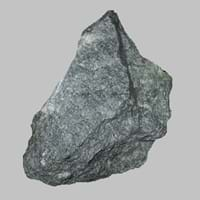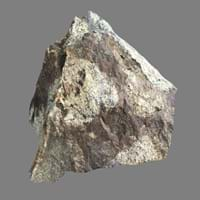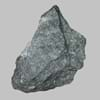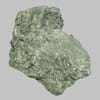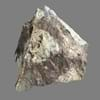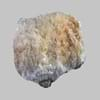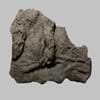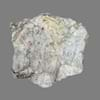Definition
It is a metamorphic magnesium rich rock because it is composed of the mineral talc
Very fine grained fault rock which is composed of glassy matrix that often contains inclusions of wall-rock fragments.
Discoverer
Unknown
Unknown
Etymology
From 17th century, because of its greasy feel and use like a soap
From pseudo- + tachylite, a glassy rock generated by frictional heat within faults.
Class
Metamorphic Rocks
Metamorphic Rocks
Sub-Class
Durable Rock, Soft Rock
Durable Rock, Hard Rock
Group
Not Applicable
Not Applicable
Other Categories
Fine Grained Rock, Opaque Rock
Fine Grained Rock, Opaque Rock
Color
Black, Black to Grey, Green, Grey
Black, Brown, Colourless, Green, Grey, Pink, White
Durability
Durable
Durable
Appearance
Dull, Banded and Foilated
Dull and Soft
Interior Uses
Bathrooms, Decorative Aggregates, Homes, Interior Decoration
Decorative Aggregates, Entryways, Interior Decoration
Exterior Uses
As Facing Stone, Garden Decoration
As Building Stone, As Facing Stone, Garden Decoration
Other Architectural Uses
Curbing
Curbing
Construction Industry
Manufacture of Magnesium and Dolomite Refractories
As Dimension Stone, Cement Manufacture, for Road Aggregate, Making natural cement
Medical Industry
Taken as a Supplement for Calcium or Magnesium
Not Yet Used
Antiquity Uses
Artifacts, Jewellery, Monuments, Sculpture
Artifacts, Monuments
Commercial Uses
Cemetery Markers, Creating Artwork, Gemstone, Jewelry, Manufacture of Soap, Solvents, Dyes, Plastics and Fibres, Production of Lime, Source of Magnesia (MgO)
Creating Artwork, Gemstone
Types
Not Available
Not Available
Features
Host Rock for Lead
Host Rock for Lead
Archaeological Significance
Famous Monuments
Christ the Redeemer in Rio de Janeiro, Stonehenge in English county of Wiltshire
Data Not Available
Sculpture
Used
Not Yet Used
Famous Sculptures
Data Not Available
Not Applicable
Pictographs
Used
Not Used
Petroglyphs
Used
Not Used
Figurines
Used
Not Yet Used
Formation
Soapstone is a talc-schist, which is a type of metamorphic rock and it is largely composed of the mineral talc and is thus rich inmagnesium.
Due to change in environmental conditions, rocks are heated and pressurized deep inside the Earth's surface. Pseudotachylite is formed from the extreme heat caused by magma or by the intense collisions and friction of tectonic plates.
Mineral Content
Albite, Apatite, Biotite, Calcite, Carbonate, Clay Minerals, Hornblende, Ilmenite, Micas, Plagioclase, Pyroxene, Quartz
Iron Oxides, Pyroxene, Quartz, Stishovite, Sulfides
Compound Content
CaO, Mg, MgO
Carbon Dioxide, Silicon Dioxide, Sulfur Dioxide, Sulphur
Types of Metamorphism
Burial Metamorphism, Cataclastic Metamorphism, Contact Metamorphism, Hydrothermal Metamorphism, Impact Metamorphism, Regional Metamorphism
Burial Metamorphism, Cataclastic Metamorphism, Contact Metamorphism
Types of Weathering
Not Applicable
Not Applicable
Types of Erosion
Not Applicable
Not Applicable
Grain Size
Fine Grained
Very fine-grained
Fracture
Conchoidal
Uneven
Streak
Black
Light to dark brown
Porosity
Less Porous
Less Porous
Cleavage
Perfect
Irregular
Toughness
1
Not Available
Specific Gravity
2.86
2.46-2.86
Transparency
Opaque
Transparent to Translucent
Density
2.8-2.9 g/cm3
2.7-2.9 g/cm3
Resistance
Heat Resistant, Pressure Resistant
Heat Resistant
Deposits in Eastern Continents
Asia
China, India, Indonesia, Japan, North Korea, Russia, Saudi Arabia, Singapore, South Korea, Sri Lanka, Tajikistan, Thailand
South Korea
Africa
Egypt, Ethiopia, Ghana, South Africa, Western Africa
Western Africa
Europe
Austria, England, Finland, France, Germany, Greece, Spain, Sweden, Switzerland, United Kingdom
Great Britain, Switzerland
Others
Not Yet Found
Not Yet Found
Deposits in Western Continents
North America
Canada, USA
Not Yet Found
South America
Colombia
Not Yet Found
Deposits in Oceania Continent
Australia
Central Australia, New Zealand, Queensland
Central Australia, Western Australia
All about Soapstone and Pseudotachylite Properties
Know all about Soapstone and Pseudotachylite properties here. All properties of rocks are important as they define the type of rock and its application. Soapstone and Pseudotachylite belong to Metamorphic Rocks.Texture of Soapstone is Polished whereas that of Pseudotachylite is Quench. Soapstone appears Dull, Banded and Foilated and Pseudotachylite appears Dull and Soft. The luster of Soapstone is greasy while that of Pseudotachylite is vitreous. Soapstone is available in black, black to grey, green, grey colors whereas Pseudotachylite is available in black, brown, colourless, green, grey, pink, white colors. The commercial uses of Soapstone and Pseudotachylite are cemetery markers, creating artwork, gemstone, jewelry, manufacture of soap, solvents, dyes, plastics and fibres, production of lime, source of magnesia (mgo).
